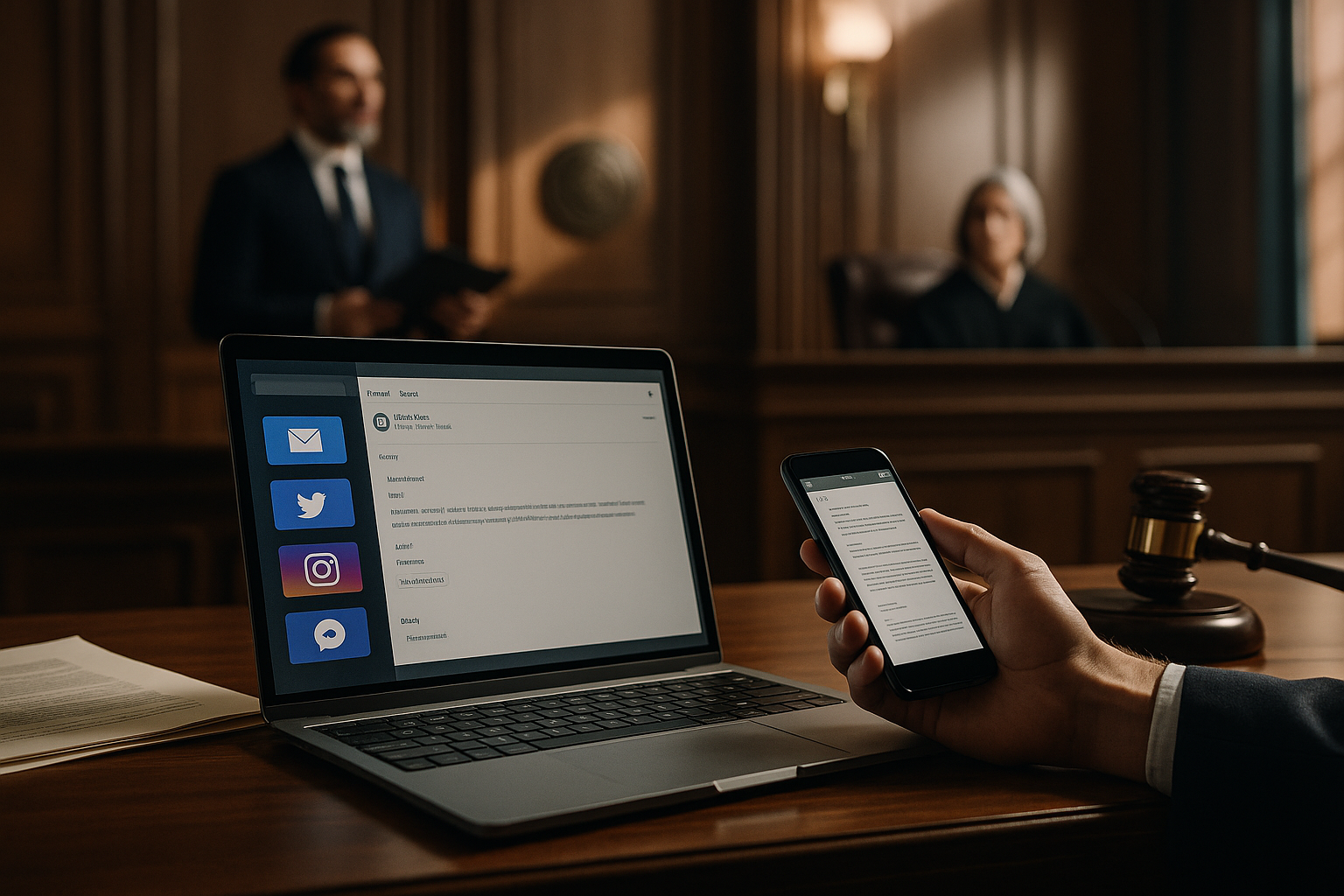"Evolving Role of Digital Evidence in Modern Legal Proceedings"
The world is witnessing an unprecedented surge in the use of digital technology, making an indelible impact on the legal landscape. The rise of digital evidence, from emails to social media posts, is transforming how cases are argued and decided. This article offers an in-depth look at the evolving role of digital evidence in modern legal proceedings, its implications, and its impact on society.

Digital Evidence: A Historical Context
Digital evidence, often referred to as electronic evidence, encompasses any information stored or transmitted in a digital form that a party to a case may use at trial. Before the digital era, evidence was predominantly physical, such as documents, weapons, or eyewitness testimonies. The advent of the digital era and the proliferation of electronic devices have changed this landscape dramatically.
In the mid-1990s, digital evidence started making its way into courtrooms, with cases such as the infamous O.J. Simpson murder trial setting precedents. Since then, the use of digital evidence has grown exponentially, reflecting the increasing digitization of our society.
The Current Legal Landscape of Digital Evidence
Digital evidence now permeates the legal system, with courts regularly admitting emails, text messages, social media posts, and other digital records into evidence. Recent legislation and court rulings have further solidified its status. For instance, the Federal Rules of Evidence in the United States were updated in 2017 to include a specific provision for digital evidence, recognizing its growing significance.
Implications and Impact on Society
The rise of digital evidence carries profound implications for society. On one hand, it can provide compelling proof where traditional forms of evidence fall short, potentially leading to more accurate verdicts. On the other hand, it raises serious concerns about privacy and security, as people’s digital footprints can be used against them in court.
Moreover, digital evidence is not immune to manipulation, adding another layer of complexity to its use and interpretation. It has also led to the emergence of a new field of expertise – digital forensics, dedicated to the collection, preservation, and analysis of digital evidence.
The Role of Digital Evidence in High-Profile Cases
Several high-profile cases highlight the importance of digital evidence. In the 2010 United States v. Warshak case, the court ruled that individuals have a reasonable expectation of privacy in their emails, setting a precedent for digital privacy rights. In the 2017 United Nations-backed trial of Ratko Mladić, digital evidence played a crucial role in securing a conviction for genocide and other war crimes.
The Future of Digital Evidence
As digital technology continues to evolve, so will the role of digital evidence in legal proceedings. It is likely to become even more central to many cases, requiring legal practitioners to become tech-savvy and familiar with digital forensics. At the same time, the legal system must address the challenges it presents, such as privacy concerns and potential manipulation, to ensure that justice is served.




